 | TODAY IN SCIENCE HISTORY
NEWSLETTER - 14 MAY |
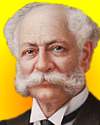 On 14 May 1919, Heny John Heinz died, the American businessman who founded the now internationally known H.J. Heinz Co. On 14 May 1919, Heny John Heinz died, the American businessman who founded the now internationally known H.J. Heinz Co.
In Financial Giants of America (1922), the biography of Henry John Heinz describes a gentlemanly businessman that cared for the welfare of his employees. It gives a brief background to how he came to start, and nurture, such a highly successful condiment company. |
 On 14 May 1918, James Hardy was born, the American surgeon who was a pioneer in human organ transplantation. He performed the first heart transplant in a human being in 1964 (the donor heart was from a chimpanzee). He led the medical field in the first lung, liver, and heart transplants as well as developing vascular and heart surgery. Dr. Hardy performed surgery for nearly half a century and made monumental contributions in the field of medicine.To day's Science Store pick is: The Academic Surgeon, by Dr. James Hardy. The autobiography of this remarkable doctor gives a fascinating look into his life, during one of the most exciting periods in medical history. On 14 May 1918, James Hardy was born, the American surgeon who was a pioneer in human organ transplantation. He performed the first heart transplant in a human being in 1964 (the donor heart was from a chimpanzee). He led the medical field in the first lung, liver, and heart transplants as well as developing vascular and heart surgery. Dr. Hardy performed surgery for nearly half a century and made monumental contributions in the field of medicine.To day's Science Store pick is: The Academic Surgeon, by Dr. James Hardy. The autobiography of this remarkable doctor gives a fascinating look into his life, during one of the most exciting periods in medical history.
New Price $29.95. Also available Used from $7.68 (as of time of writing). Yesterday's pick: Cyrus Hall McCormick: His Life and Work, by Herbert N. Casson.
For picks from earlier newsletters, see the Today in Science Science Store home page. | |
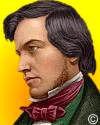 | "There are few substance to which it yields interest, when it is considered how very intimately the knowledge and properties and uses of iron is connected with human civilization."
- George Fownes, English chemist who prepared furfurine and benzoline (1845), the first examples of vegeto-alkali or organic salt-bases, as they were known then. (born 14 May 1815)  |
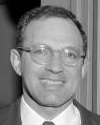
| "The total number of people who understand relativistic time, even after eighty years since the advent of special relativity, is still much smaller than the number of people who believe in horoscopes."
- Yuval Ne'eman, Israli theoretical physicist (born 14 May 1925)  |
 | "To do a common thing uncommonly well brings success." - A favorite maxim. - Henry John Heinz, businessman who founded H.J. Heinz Co. (died 14 May 1919)  |
| Before you look at today's web page, see if you can answer some of these questions about the events that happened on this day. Some of the names are very familiar. Others will likely stump you. Tickle your curiosity with these questions, then check your answers on today's web page. |

|  Yuval Ne'eman, born 14 May 1925 is an Israli theoretical physicist, who worked independently of Gell-Mann but almost simultaneously (1961) devised a method of grouping baryons in such a way that they fell into logical families. The scheme grouped mesons and baryons (e.g., protons and neutrons) into multiplets of 1, 8, 10, or 27 members on the basis of various properties. Yuval Ne'eman, born 14 May 1925 is an Israli theoretical physicist, who worked independently of Gell-Mann but almost simultaneously (1961) devised a method of grouping baryons in such a way that they fell into logical families. The scheme grouped mesons and baryons (e.g., protons and neutrons) into multiplets of 1, 8, 10, or 27 members on the basis of various properties.
 What is the name given to the scheme? What is the name given to the scheme? |
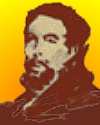
|  Mikhail Semyonovich Tswett, born 14 May 1872, was a Russian botanist. He developed and named a technique of separating plant pigments by extracting them from leaves with ether and alcohol and percolating the solution through a column of calcium carbonate. The components of the mixture moved at different rates, producing a series of bands. Mikhail Semyonovich Tswett, born 14 May 1872, was a Russian botanist. He developed and named a technique of separating plant pigments by extracting them from leaves with ether and alcohol and percolating the solution through a column of calcium carbonate. The components of the mixture moved at different rates, producing a series of bands.
 Can you name this technique? Can you name this technique? |
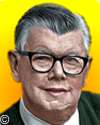
|  An American electrical engineer (1902-1978) is best known for founding the world's first mass-producer of business jet aircraft. Beginning in 1930, over a 20 year period, he secured more than 100 patents for aircraft radios, communications and navigation equipment. His other inventions include the miniature automatic pilot for aircraft, the first commercial automobile radio, and the eight-track stereo tape player. An American electrical engineer (1902-1978) is best known for founding the world's first mass-producer of business jet aircraft. Beginning in 1930, over a 20 year period, he secured more than 100 patents for aircraft radios, communications and navigation equipment. His other inventions include the miniature automatic pilot for aircraft, the first commercial automobile radio, and the eight-track stereo tape player.
 Can you name the inventor? Can you name the inventor? |
 |  Henry John Heinz (1844-1919) founded H.J. Heinz Co. His entrepreneur and business genius had roots in post-Civil War Pittsburgh, where iron, steel and glass factories were forging industrial America. By age 12 he was peddling produce from the family garden. At 25, in 1869, he and a friend launched Heinz & Noble. Its first product: Henry's mother's grated horseradish, bottled in clear glass to reveal its purity. Heinz & Noble thrived until an overabundance of crops in 1875 brought bankruptcy. But Henry plunged back in, eventually building a model factory complex along the Allegheny River. By 1896, at only 52, the pickle king had become a millionaire and celebrity. Henry John Heinz (1844-1919) founded H.J. Heinz Co. His entrepreneur and business genius had roots in post-Civil War Pittsburgh, where iron, steel and glass factories were forging industrial America. By age 12 he was peddling produce from the family garden. At 25, in 1869, he and a friend launched Heinz & Noble. Its first product: Henry's mother's grated horseradish, bottled in clear glass to reveal its purity. Heinz & Noble thrived until an overabundance of crops in 1875 brought bankruptcy. But Henry plunged back in, eventually building a model factory complex along the Allegheny River. By 1896, at only 52, the pickle king had become a millionaire and celebrity.
 What was his famous Heinz slogan? What was his famous Heinz slogan? |
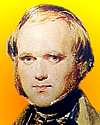
|  Charles Darwin began writing his book, The Origin of Species, sitting in the study of his country home in Down, England. Charles Darwin began writing his book, The Origin of Species, sitting in the study of his country home in Down, England.
 In what decade did Darwin begin his book? |
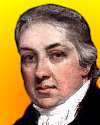
|  In 1796, an English physician administered the first vaccination against smallpox to an eight-year-old boy. He innoculated an 8-year-old boy, James Phipps, with material from the sores of dairymaid Sarah Nelmes who had a mild case of cowpox. He subsequently tested the boy's resistance to smallpox, which fortunately was successful. This tested a conventional wisdom he had heard that those who had survived cowpox seemed to be immune to the deadly smallpox disease. In 1796, an English physician administered the first vaccination against smallpox to an eight-year-old boy. He innoculated an 8-year-old boy, James Phipps, with material from the sores of dairymaid Sarah Nelmes who had a mild case of cowpox. He subsequently tested the boy's resistance to smallpox, which fortunately was successful. This tested a conventional wisdom he had heard that those who had survived cowpox seemed to be immune to the deadly smallpox disease.
 Can you name this man? |
|  In 1878, the a U.S. trademark was registered for the petroleum jelly developed by an English-born chemist Robert Augustus Chesebrough. He began, in 1859, with an interest in the petroleum oil boom, and travelled to Titusville, Pa., where oil strikes began, to enter that business. Once there, his chemist's curiosity was caught by a pasty residue that stuck to driller's rods and clogged their pumps. Workers had found it was practical to use on burns and cuts to promote healing. Cheseborough returned to Brooklyn and spent years experimenting to extract and purify the useful ingredient he called "petroleum jelly." Manufacturing from 1870, he received a patent on the product on 4 Jun 1872 (No. 127,568). In 1878, the a U.S. trademark was registered for the petroleum jelly developed by an English-born chemist Robert Augustus Chesebrough. He began, in 1859, with an interest in the petroleum oil boom, and travelled to Titusville, Pa., where oil strikes began, to enter that business. Once there, his chemist's curiosity was caught by a pasty residue that stuck to driller's rods and clogged their pumps. Workers had found it was practical to use on burns and cuts to promote healing. Cheseborough returned to Brooklyn and spent years experimenting to extract and purify the useful ingredient he called "petroleum jelly." Manufacturing from 1870, he received a patent on the product on 4 Jun 1872 (No. 127,568).
 What was the trademark name? |
When you have your answers ready to all the questions above, you'll find all the information to check them, and more, on the May 14 web page of Today in Science History. Or, try this link first for just the brief answers.
Fast answers for the previous newsletter for May 13: His discovery of the malarial parasite in the gastrointestinal tract of the Anopheles mosquito showed how malaria was transmitted by Anopheles; reaper; Joseph Henry; Velcro; four; table knife.
|
 If you enjoy this newsletter, the website, or wish to offer encouragement or ideas, please send feedback by using your mail reader Reply button. If you enjoy this newsletter, the website, or wish to offer encouragement or ideas, please send feedback by using your mail reader Reply button. |
--
If you do not want to receive any more newsletters,
Unsubscribe To update your preferences and to unsubscribe visit
this link 


 On 14 May 1919, Heny John Heinz died, the American businessman who founded the now internationally known H.J. Heinz Co.
On 14 May 1919, Heny John Heinz died, the American businessman who founded the now internationally known H.J. Heinz Co.



 Yuval Ne'eman, born 14 May 1925 is an Israli theoretical physicist, who worked independently of Gell-Mann but almost simultaneously (1961) devised a method of grouping baryons in such a way that they fell into logical families. The scheme grouped mesons and baryons (e.g., protons and neutrons) into multiplets of 1, 8, 10, or 27 members on the basis of various properties.
Yuval Ne'eman, born 14 May 1925 is an Israli theoretical physicist, who worked independently of Gell-Mann but almost simultaneously (1961) devised a method of grouping baryons in such a way that they fell into logical families. The scheme grouped mesons and baryons (e.g., protons and neutrons) into multiplets of 1, 8, 10, or 27 members on the basis of various properties.  What is the name given to the scheme?
What is the name given to the scheme?
 Mikhail Semyonovich Tswett, born 14 May 1872, was a Russian botanist. He developed and named a technique of separating plant pigments by extracting them from leaves with ether and alcohol and percolating the solution through a column of calcium carbonate. The components of the mixture moved at different rates, producing a series of bands.
Mikhail Semyonovich Tswett, born 14 May 1872, was a Russian botanist. He developed and named a technique of separating plant pigments by extracting them from leaves with ether and alcohol and percolating the solution through a column of calcium carbonate. The components of the mixture moved at different rates, producing a series of bands. Can you name this technique?
Can you name this technique?
 An American electrical engineer (1902-1978) is best known for founding the world's first mass-producer of business jet aircraft. Beginning in 1930, over a 20 year period, he secured more than 100 patents for aircraft radios, communications and navigation equipment. His other inventions include the miniature automatic pilot for aircraft, the first commercial automobile radio, and the eight-track stereo tape player.
An American electrical engineer (1902-1978) is best known for founding the world's first mass-producer of business jet aircraft. Beginning in 1930, over a 20 year period, he secured more than 100 patents for aircraft radios, communications and navigation equipment. His other inventions include the miniature automatic pilot for aircraft, the first commercial automobile radio, and the eight-track stereo tape player. Can you name the inventor?
Can you name the inventor? 
 Henry John Heinz (1844-1919) founded H.J. Heinz Co. His entrepreneur and business genius had roots in post-Civil War Pittsburgh, where iron, steel and glass factories were forging industrial America. By age 12 he was peddling produce from the family garden. At 25, in 1869, he and a friend launched Heinz & Noble. Its first product: Henry's mother's grated horseradish, bottled in clear glass to reveal its purity. Heinz & Noble thrived until an overabundance of crops in 1875 brought bankruptcy. But Henry plunged back in, eventually building a model factory complex along the Allegheny River. By 1896, at only 52, the pickle king had become a millionaire and celebrity.
Henry John Heinz (1844-1919) founded H.J. Heinz Co. His entrepreneur and business genius had roots in post-Civil War Pittsburgh, where iron, steel and glass factories were forging industrial America. By age 12 he was peddling produce from the family garden. At 25, in 1869, he and a friend launched Heinz & Noble. Its first product: Henry's mother's grated horseradish, bottled in clear glass to reveal its purity. Heinz & Noble thrived until an overabundance of crops in 1875 brought bankruptcy. But Henry plunged back in, eventually building a model factory complex along the Allegheny River. By 1896, at only 52, the pickle king had become a millionaire and celebrity. What was his famous Heinz slogan?
What was his famous Heinz slogan? 
 Charles Darwin began writing his book, The Origin of Species, sitting in the study of his country home in Down, England.
Charles Darwin began writing his book, The Origin of Species, sitting in the study of his country home in Down, England. In what decade did Darwin begin his book?
In what decade did Darwin begin his book?
 In 1796, an English physician administered the first vaccination against smallpox to an eight-year-old boy. He innoculated an 8-year-old boy, James Phipps, with material from the sores of dairymaid Sarah Nelmes who had a mild case of cowpox. He subsequently tested the boy's resistance to smallpox, which fortunately was successful. This tested a conventional wisdom he had heard that those who had survived cowpox seemed to be immune to the deadly smallpox disease.
In 1796, an English physician administered the first vaccination against smallpox to an eight-year-old boy. He innoculated an 8-year-old boy, James Phipps, with material from the sores of dairymaid Sarah Nelmes who had a mild case of cowpox. He subsequently tested the boy's resistance to smallpox, which fortunately was successful. This tested a conventional wisdom he had heard that those who had survived cowpox seemed to be immune to the deadly smallpox disease. Can you name this man?
Can you name this man? In 1878, the a U.S. trademark was registered for the petroleum jelly developed by an English-born chemist Robert Augustus Chesebrough. He began, in 1859, with an interest in the petroleum oil boom, and travelled to Titusville, Pa., where oil strikes began, to enter that business. Once there, his chemist's curiosity was caught by a pasty residue that stuck to driller's rods and clogged their pumps. Workers had found it was practical to use on burns and cuts to promote healing. Cheseborough returned to Brooklyn and spent years experimenting to extract and purify the useful ingredient he called "petroleum jelly." Manufacturing from 1870, he received a patent on the product on 4 Jun 1872 (No. 127,568).
In 1878, the a U.S. trademark was registered for the petroleum jelly developed by an English-born chemist Robert Augustus Chesebrough. He began, in 1859, with an interest in the petroleum oil boom, and travelled to Titusville, Pa., where oil strikes began, to enter that business. Once there, his chemist's curiosity was caught by a pasty residue that stuck to driller's rods and clogged their pumps. Workers had found it was practical to use on burns and cuts to promote healing. Cheseborough returned to Brooklyn and spent years experimenting to extract and purify the useful ingredient he called "petroleum jelly." Manufacturing from 1870, he received a patent on the product on 4 Jun 1872 (No. 127,568). What was the trademark name?
What was the trademark name? If you enjoy this newsletter, the website, or wish to offer encouragement or ideas, please send feedback by using your mail reader Reply button.
If you enjoy this newsletter, the website, or wish to offer encouragement or ideas, please send feedback by using your mail reader Reply button. 

Δεν υπάρχουν σχόλια:
Δημοσίευση σχολίου